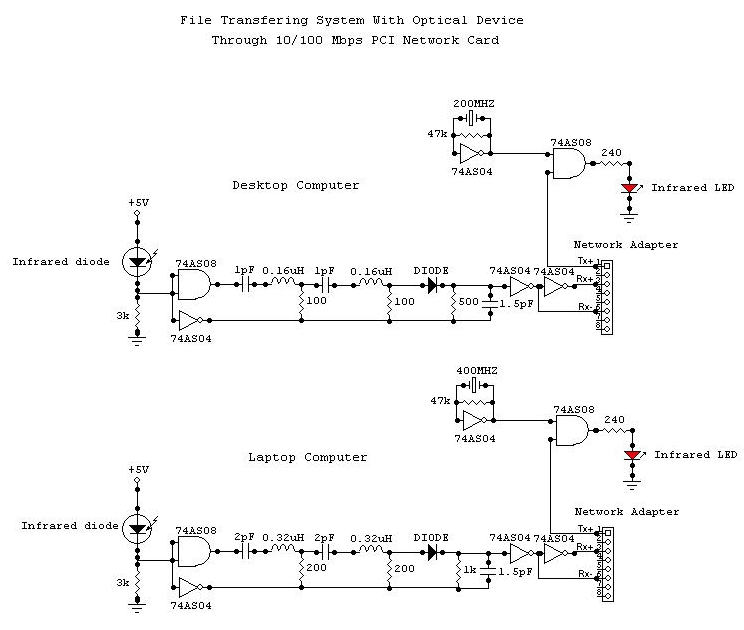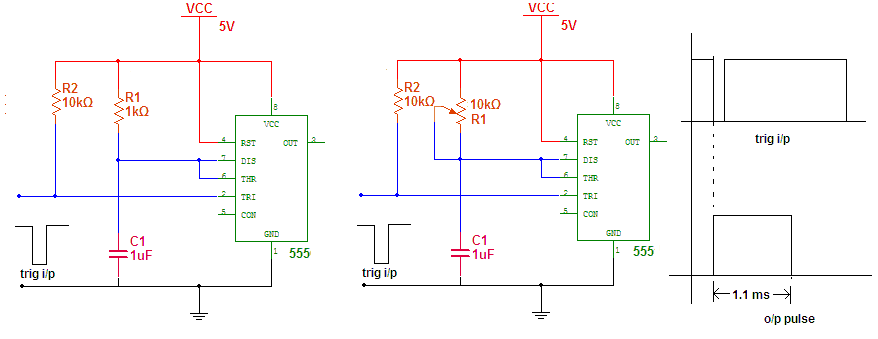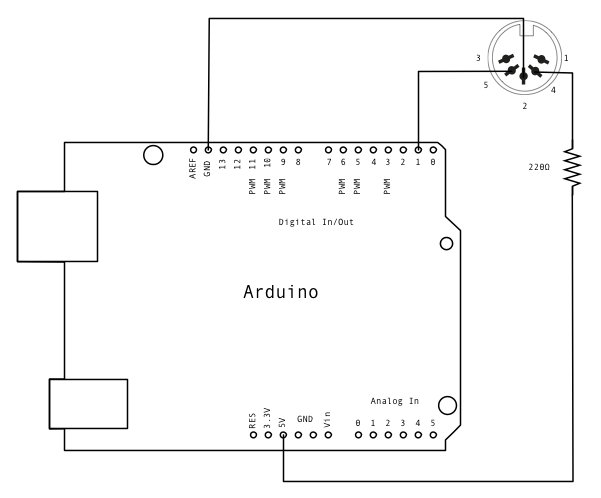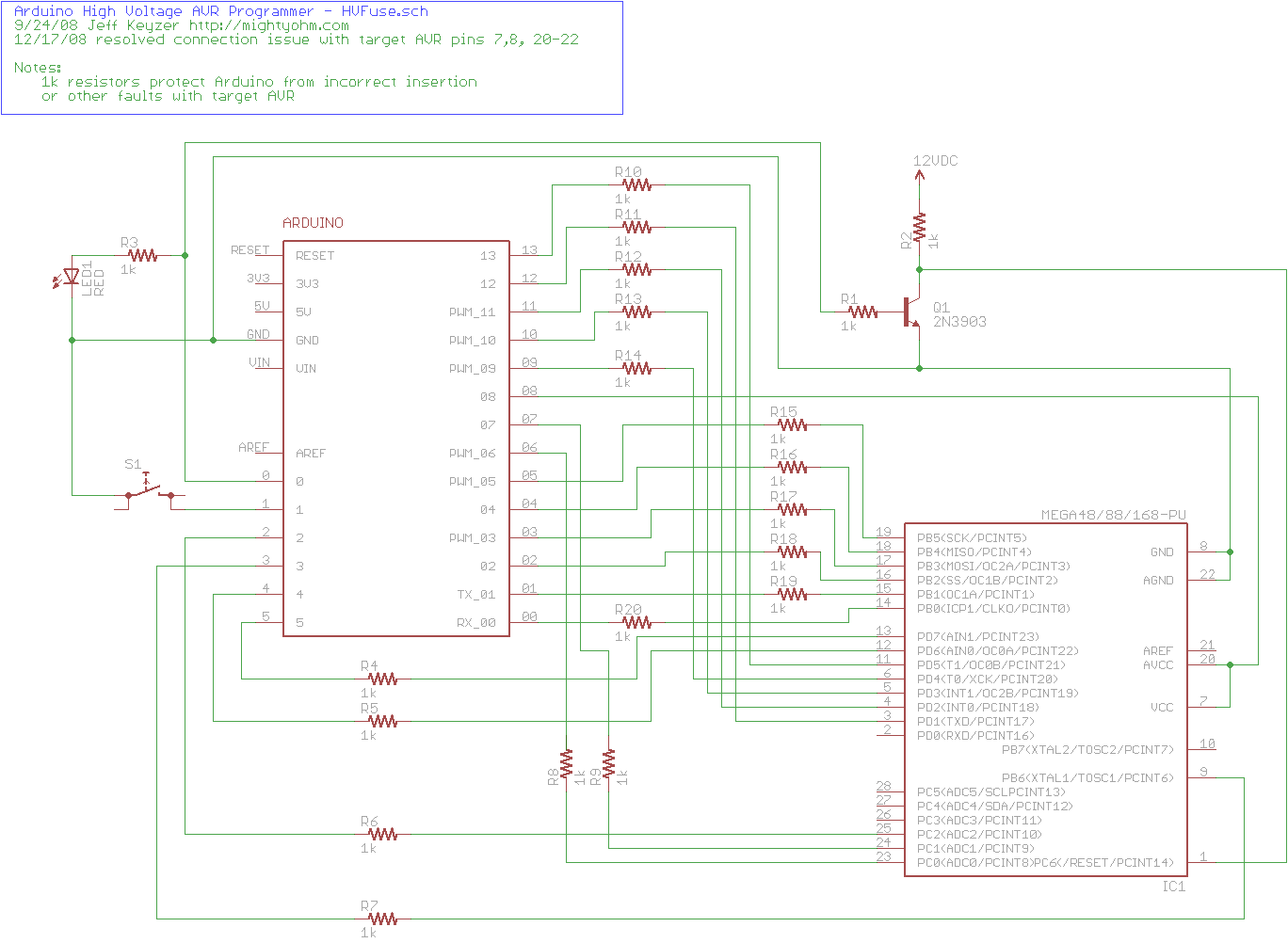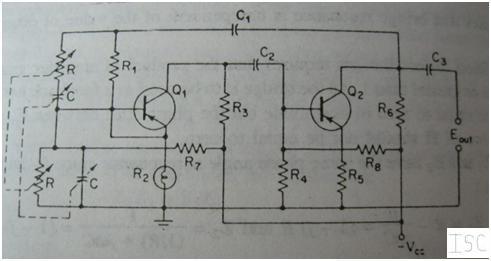
arduino Electret Microphone preamplification will it work for dynamic type microphone
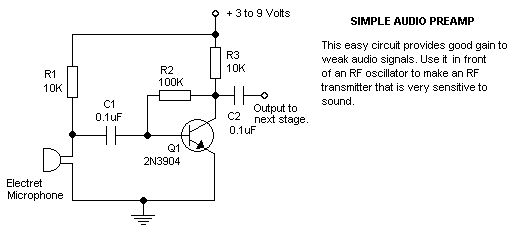
The circuit functions adequately, although it is not ideal in terms of quality. However, there is a minor issue when interfacing the output with an Arduino. The output swings below ground, meaning it is biased at 0V, while the Arduino's analog input only accepts positive voltages. The voltage divider, composed of resistors R2 and R4, biases the TO_ADC node at 2.5V, allowing the ADC pin to perceive the full range of the signal. Without this biasing, the ADC would only detect the positive half of the signal, as there is no negative power supply available. The output behavior may vary based on the ADC's input impedance, which is represented by Radc and Cadc in the simulation. An alternative approach to manage the transistor gain effectively involves using an emitter resistor with AC bypass, resulting in a lower impedance output signal that oscillates around approximately 2.5V (with V+ at 5V). The capacitors can be smaller than 10µF, with 100nF being an acceptable choice for the input capacitor. Radc and Cadc are not physical components to be included in the circuit; they merely illustrate the characteristics of the microcontroller's analog input pin. Some microcontroller ADCs exhibit low input impedances, which can load the signal and result in lower readings than anticipated. The circuit demonstrates competent handling of a 20mV input; however, distortion occurs due to uneven gain, particularly noticeable on the negative swing. There are superior options and variations available, and the aforementioned circuit may require value adjustments. A simple op-amp circuit could be one alternative, but the choice largely depends on the user's concern regarding sound quality. If some distortion is acceptable, the initial circuit with appropriate biasing will suffice.
The circuit operates as a basic analog signal processing system designed to interface with an Arduino microcontroller. The main components include a transistor for amplification and a voltage divider formed by resistors R2 and R4 to establish the necessary biasing for the ADC input. The design addresses the challenge of ensuring that the output signal remains within the acceptable range for the Arduino, which can only read positive voltages.
The voltage divider effectively shifts the signal level, allowing the ADC to interpret the full waveform, including both the positive and negative swings. This is crucial for applications that require accurate signal representation, particularly when dealing with AC signals. The choice of resistors R2 and R4 must be made carefully to achieve the desired bias point, which is typically set to half of the supply voltage (2.5V in this case) to maximize the signal swing.
The transistor's gain is managed by incorporating an emitter resistor with AC bypass, which stabilizes the gain and ensures that the output impedance is lower, making it more compatible with the ADC's input characteristics. The use of capacitors for coupling and bypassing can significantly affect the frequency response and transient behavior of the circuit. While larger capacitors may provide better low-frequency performance, smaller capacitors can also be utilized effectively, depending on the application requirements.
It is essential to consider the input impedance of the ADC when designing the circuit, as low input impedance can load the signal, leading to attenuation and inaccurate readings. The simulation parameters represented by Radc and Cadc help in understanding the interaction between the circuit and the ADC, guiding the design toward achieving optimal performance.
In summary, the circuit can be refined by experimenting with component values and configurations, such as exploring op-amp alternatives for improved sound quality. However, if the application can tolerate some distortion, the current design with appropriate biasing serves as a functional solution for interfacing with Arduino-based systems.The circuit is okay (not ideal for quality but it will work), but there`s one small issue if you want to feed the output to your Arduino. As shown, the output will swing below ground (i. e. it will be biased at 0V) and your Arduinos analog input will only accept positive voltages. The voltage divider is made from R2 and R4, and it biases (read "hol ds") the TO_ADC node at 2. 5V so the ADC pin sees the full swing of the signal. Without it the ADC would only see the positive half of the signal, because we have no negative power supply present. Then the output will be more like this (depending on your ADCs input impedance it may not work well though - this is the bit that is simulated by Radc and Cadc, I`ll check this shortly): Okay, here`s an option which controls the transistor gain properly (using the emitter resistor with AC bypass) and outputs a lower impedance signal that swings around ~2.
5V (V+ is 5V - the capacitors do not have to be as large as 10uF, you can still use 100nF if you wish for your input capacitor): Radc and Cadc are not components you need to add (so you can ignore them if/when you make the circuit), they represent your microcontrollers analogue input pin characteristics. Some microcontroller ADCs can have quite low input impedances which can load your signal and attenuate it (so basically you end up with a lower reading than you expected) We can see this handles a 20mV input pretty well, if we input 20mV to the original circuit (even without any loading), we get some distortion due to the uneven gain (note flattened edges on negative swing): There are still better options and variations (the above may need the values tweaking a little) A simple opamp circuit would be one, but it depends on how concerned you are about the sound quality whether you would want to bother.
If you`re happy with a bit of distortion, then the first circuit with a suitable method of biasing will be fine. 🔗 External reference
The circuit operates as a basic analog signal processing system designed to interface with an Arduino microcontroller. The main components include a transistor for amplification and a voltage divider formed by resistors R2 and R4 to establish the necessary biasing for the ADC input. The design addresses the challenge of ensuring that the output signal remains within the acceptable range for the Arduino, which can only read positive voltages.
The voltage divider effectively shifts the signal level, allowing the ADC to interpret the full waveform, including both the positive and negative swings. This is crucial for applications that require accurate signal representation, particularly when dealing with AC signals. The choice of resistors R2 and R4 must be made carefully to achieve the desired bias point, which is typically set to half of the supply voltage (2.5V in this case) to maximize the signal swing.
The transistor's gain is managed by incorporating an emitter resistor with AC bypass, which stabilizes the gain and ensures that the output impedance is lower, making it more compatible with the ADC's input characteristics. The use of capacitors for coupling and bypassing can significantly affect the frequency response and transient behavior of the circuit. While larger capacitors may provide better low-frequency performance, smaller capacitors can also be utilized effectively, depending on the application requirements.
It is essential to consider the input impedance of the ADC when designing the circuit, as low input impedance can load the signal, leading to attenuation and inaccurate readings. The simulation parameters represented by Radc and Cadc help in understanding the interaction between the circuit and the ADC, guiding the design toward achieving optimal performance.
In summary, the circuit can be refined by experimenting with component values and configurations, such as exploring op-amp alternatives for improved sound quality. However, if the application can tolerate some distortion, the current design with appropriate biasing serves as a functional solution for interfacing with Arduino-based systems.The circuit is okay (not ideal for quality but it will work), but there`s one small issue if you want to feed the output to your Arduino. As shown, the output will swing below ground (i. e. it will be biased at 0V) and your Arduinos analog input will only accept positive voltages. The voltage divider is made from R2 and R4, and it biases (read "hol ds") the TO_ADC node at 2. 5V so the ADC pin sees the full swing of the signal. Without it the ADC would only see the positive half of the signal, because we have no negative power supply present. Then the output will be more like this (depending on your ADCs input impedance it may not work well though - this is the bit that is simulated by Radc and Cadc, I`ll check this shortly): Okay, here`s an option which controls the transistor gain properly (using the emitter resistor with AC bypass) and outputs a lower impedance signal that swings around ~2.
5V (V+ is 5V - the capacitors do not have to be as large as 10uF, you can still use 100nF if you wish for your input capacitor): Radc and Cadc are not components you need to add (so you can ignore them if/when you make the circuit), they represent your microcontrollers analogue input pin characteristics. Some microcontroller ADCs can have quite low input impedances which can load your signal and attenuate it (so basically you end up with a lower reading than you expected) We can see this handles a 20mV input pretty well, if we input 20mV to the original circuit (even without any loading), we get some distortion due to the uneven gain (note flattened edges on negative swing): There are still better options and variations (the above may need the values tweaking a little) A simple opamp circuit would be one, but it depends on how concerned you are about the sound quality whether you would want to bother.
If you`re happy with a bit of distortion, then the first circuit with a suitable method of biasing will be fine. 🔗 External reference
